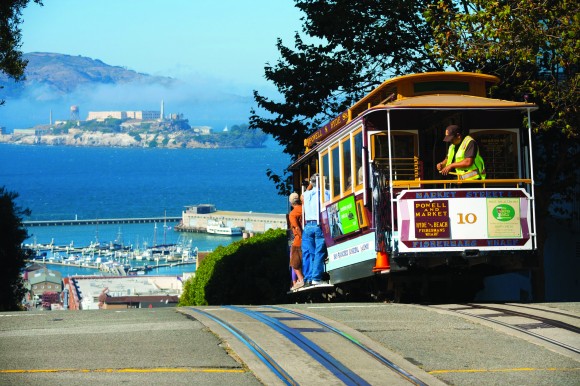In this city of innumerable tourist attractions, the clanging, hill-conquering cable cars stand out as a top draw.
The quaint conveyances also stand out for the inordinate number of accidents and the millions of dollars annually the city pays out to settle lawsuits for broken bones, severed feet and bad bruises caused when 19th-century technology runs headlong into 21st-century city traffic and congestion.
Cable cars average about an accident a month and routinely rank among the most accident-prone mass transportation modes in the country per vehicle mile traveled annually, according to the U.S. Department of Transportation. Over the last 10 years, city officials have reported 126 accidents injuring 151 people.
After the latest serious accident – when seven people were injured after a cable car slammed to an unexpected stop after hitting a small bolt in the track – the Associated Press obtained through a public records request a listing of cable car-related legal settlements over the last three years.
Those figures show the city paying nearly $8 million to settle about four dozen legal claims.
The city has paid on average $12 million annually to settle all claims connected to its mass transportation system that in addition to cable cars consists of electric street cars and buses, which travel many more miles and carry many more passengers.
City officials acknowledge that the open air cable cars, which ply only eight miles of track, produce a disproportionate amount of accident-related costs.
But they say the cars are a much beloved and valuable part of the city’s life and character.
“The iconic cable cars of San Francisco are a National Historic Landmark and we work every day to make them safer,” San Francisco Mayor Ed Lee said, adding, “While accidents and injuries are down from just a few years ago, we are always working to improve the system as a whole.”
Federal transportation figures show 19 injuries and 16 accidents last year, the second highest amount reported in the last 10 years. There were 36 accidents reported in 2004.
Recently, five passengers and two workers were injured after the bolt caused their cable car to slam to a sudden stop. The conductor had facial and tongue injuries and the driver suffered internal injuries and cracked ribs, transit officials said. Legal claims are expected, as they always are after a cable car accident.
The city has been settling lawsuits almost since the cable cars began operation in 1893. One woman won a 1970 jury verdict of $50,000 after she claimed that a minor accident on a cable car she was riding turned her into a nymphomaniac.
San Francisco remains the only place on the planet with a true, manually operated cable-car system serving the public. First introduced in the late 1800s to save the strain on horses hauling carts up the city’s steep inclines, the 15,500-pound cable-powered cars grip a continuously moving underground cable with pliers-like gear to travel the streets of San Francisco.
They are a San Francisco icon vital to the city’s booming tourism industry. An estimated 7 million ride the cable cars annually, the vast majority tourists.
The biggest single payout over the last three years went to John Gainor, who received $3 million in 2011 because his foot had to be amputated after it got caught between the cable car he was standing on and a parked vehicle.
Another $4 million went to the four victims of a runaway cable car that sped down a steep San Francisco hill before leaving the tracks and careening onto the sidewalk.
Topics Auto
Was this article valuable?
Here are more articles you may enjoy.



 Former Congressman Charged After Collision with State Trooper in Florida
Former Congressman Charged After Collision with State Trooper in Florida  FBI Says Chinese Hackers Preparing to Attack US Infrastructure
FBI Says Chinese Hackers Preparing to Attack US Infrastructure  JPMorgan Client Who Lost $50 Million Fortune Faces Court Setback
JPMorgan Client Who Lost $50 Million Fortune Faces Court Setback  Uncertainty Keeps Prices Up; No Prior-Year Loss Development: Travelers
Uncertainty Keeps Prices Up; No Prior-Year Loss Development: Travelers 


